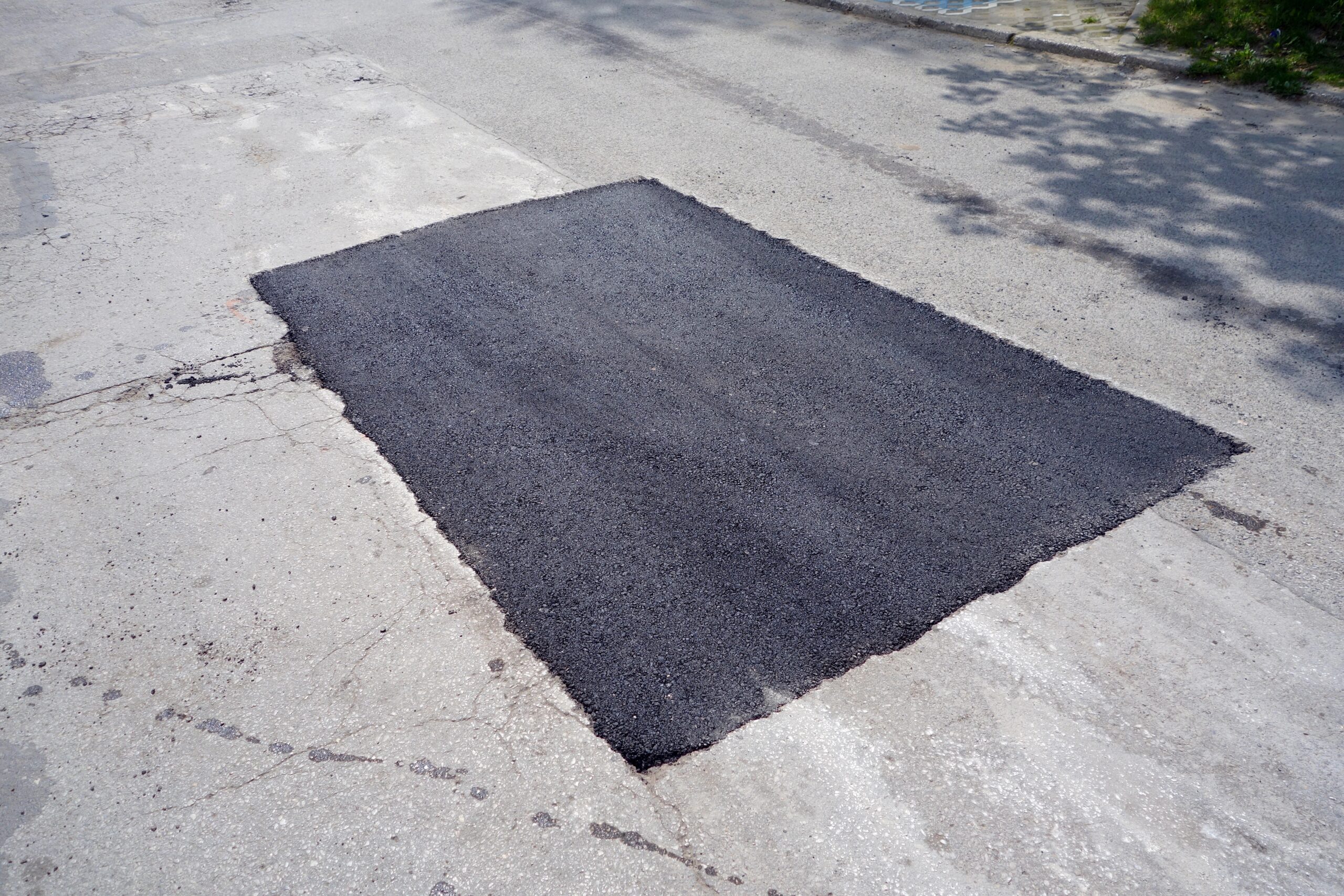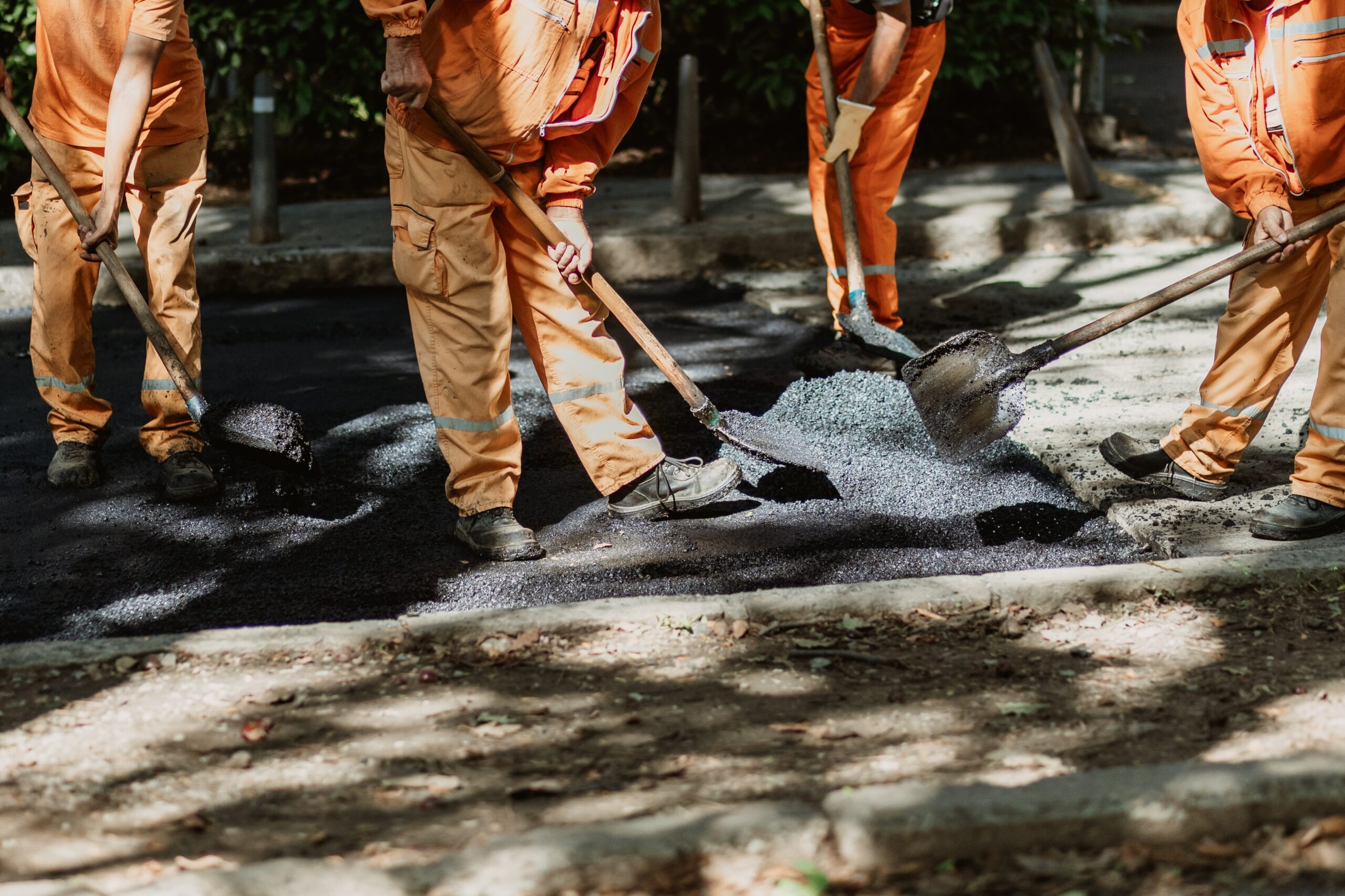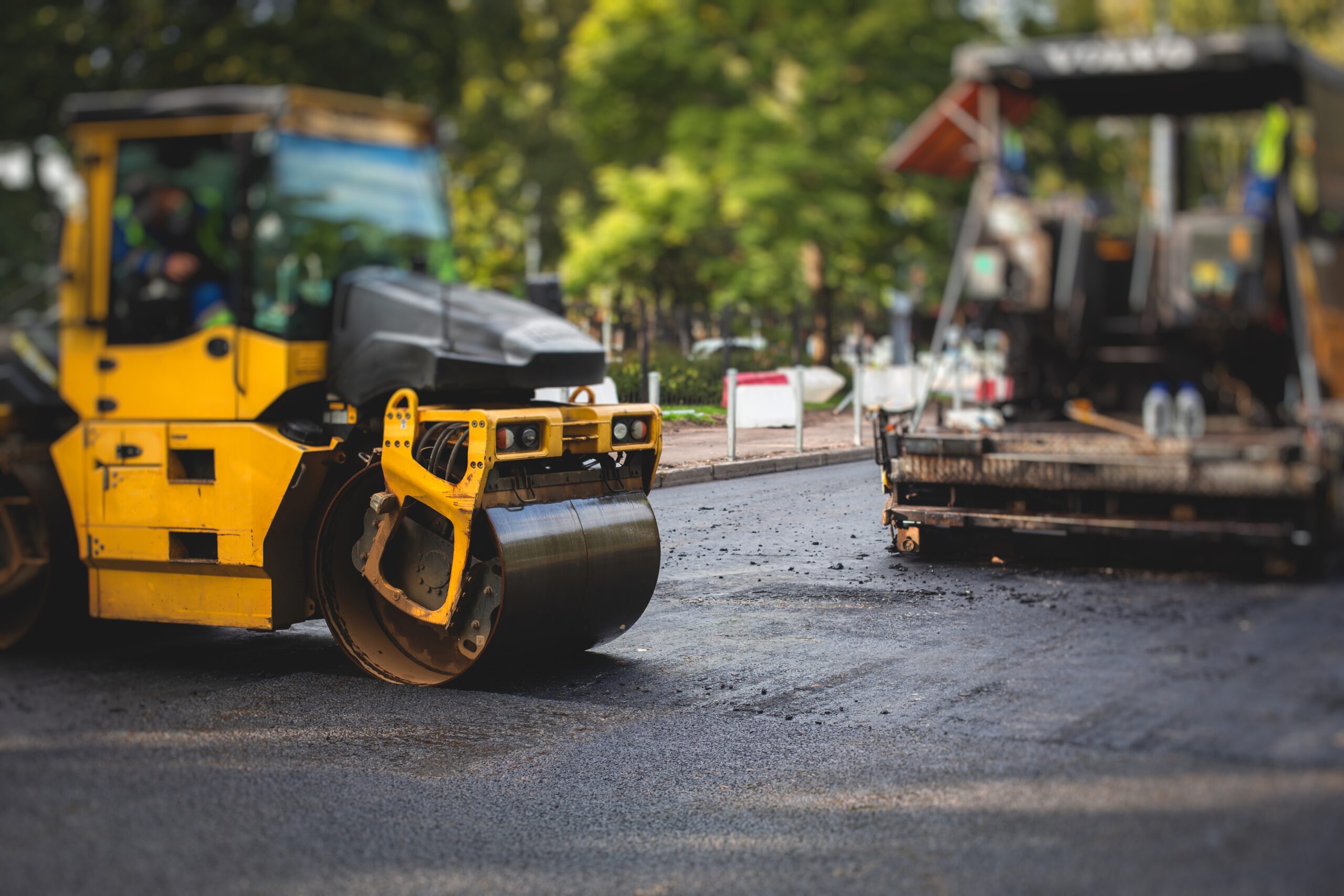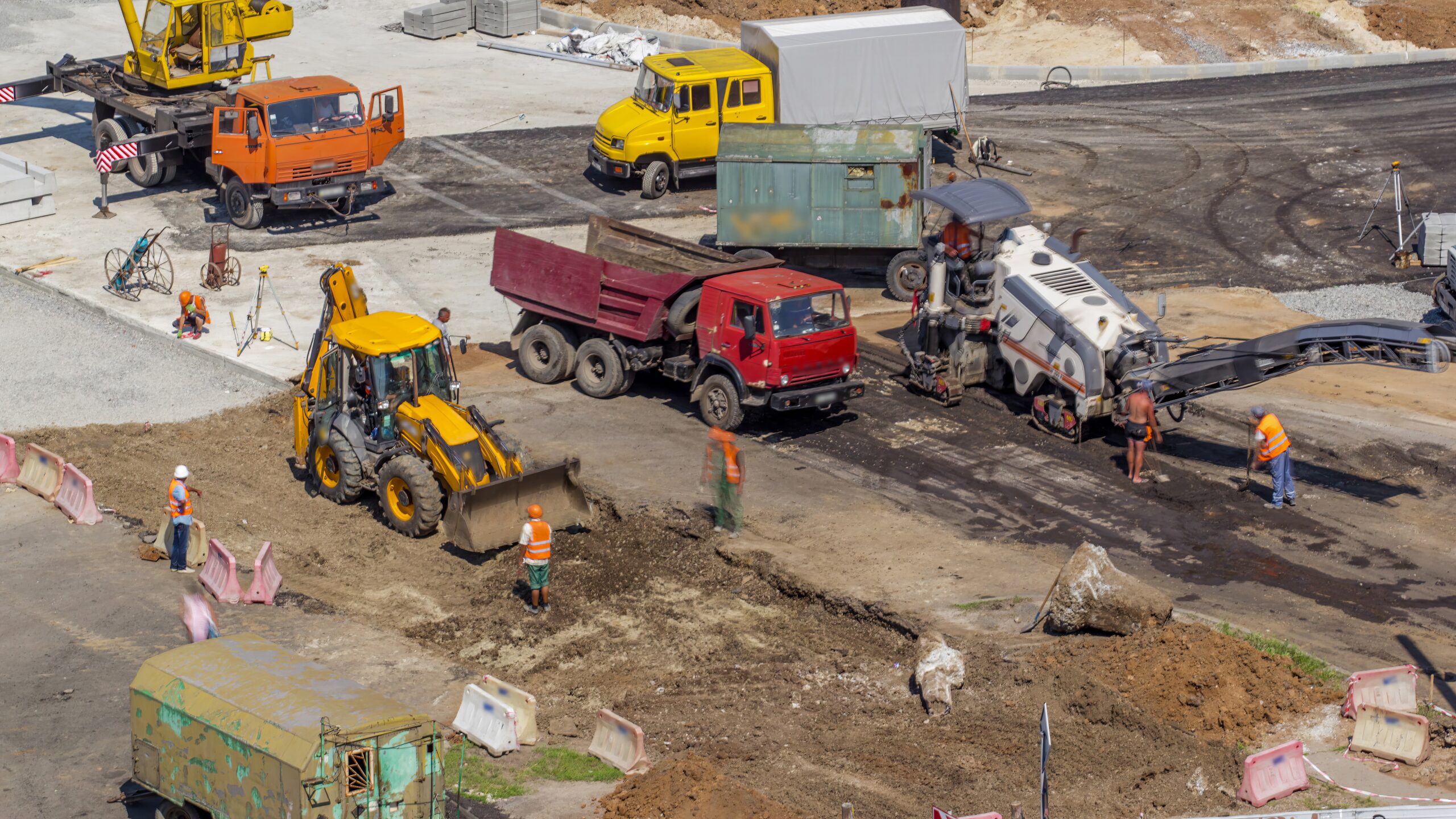
Asphalt damage, whether it’s cracks, potholes, or surface fading can be a costly headache for property managers, often leading to increased expenses and tenant dissatisfaction. In Colorado’s freeze-thaw climate, neglecting repairs escalates small issues into budget-busting repaves.
Cost-effective fixes like crack filling, patching, and sealcoating save money while extending pavement life.
This guide explores practical asphalt repair Denver solutions for 2025, helping Front Range managers keep lots safe and attractive without breaking the bank. Learn affordable methods to tackle damage early and avoid pricey overhauls.
Why Asphalt Damage Happens
Asphalt takes a beating from weather, traffic, and time. Understanding why damage occurs helps you choose repairs that last, saving money long-term. In the Front Range, specific culprits demand attention.
Freeze-Thaw Cycles
Colorado’s winters bring freezing water that expands in cracks, weakening pavement. Thawing leaves gaps, eroding the base. A 2018 study found freeze-thaw cycles cause 60% of regional asphalt failures (Asphalt Institute, 2018). Early repairs prevent potholes in Denver lots.
Heavy Traffic
Trucks and constant traffic stress asphalt, forming ruts or cracks. Aurora retail lots see this from delivery vehicles. Strong repairs like patching handle high-traffic demands cost-effectively.
UV Rays and Aging
Sunlight dries asphalt, making it brittle and prone to cracking. Fading lots in Colorado Springs lose flexibility, accelerating wear. Sealcoating slows aging, protecting your investment.
- Weather: Freezing water and UV rays erode pavement.
- Traffic: Heavy loads create cracks and ruts.
- Aging: Old asphalt loses strength, needing proactive fixes.
The Cost of Ignoring Damage
Delaying repairs turns minor cracks into major expenses. Water seeps through, eroding the base and causing potholes or collapses. Here’s why acting fast saves budgets.
Escalating Repair Costs
Small cracks cost $1-$3 per foot to seal but grow into potholes needing $5-$15 per square foot patches. A Denver office lot’s ignored cracks led to a $10,000 pothole fix. Early action keeps costs low.
Safety and Liability
Potholes risk vehicle damage or trips, inviting lawsuits. A Fort Collins retail lot faced $15,000 in claims from a pothole-related accident. Timely repairs reduce liability, protecting tenants.
Reduced Pavement Life
Unfixed damage cuts asphalt life by 30%, per a 2020 study (Miller & Bellinger, 2020). Repaving costs $50-$100 per square foot versus $0.20-$0.50 for sealcoating. Maintenance extends life affordably.
- Higher Costs: Cracks escalate to pricier fixes.
- Liability: Hazards invite lawsuits.
- Shorter Life: Neglect forces early repaving.
Cost-Effective Repair Methods
Smart repairs tackle damage without draining budgets. These methods offer durability and savings, tailored to Front Range challenges. Here are the top options.
Crack Filling
Crack filling seals working cracks (wider than 0.1 inches) with rubberized sealant, blocking water. At $1-$3 per linear foot, it’s a bargain for Denver apartment lots. It prevents potholes, saving thousands over repaving.
- Best For: Minor, moving cracks.
- Cost: $1-$3 per foot.
- Benefit: Stops water damage early.
Patching
Patching replaces broken asphalt in potholes or alligator cracks, costing $5-$15 per square foot. It restores strength in high-traffic Aurora warehouses. Patching avoids full repaves, balancing cost and durability.
- Best For: Potholes, deep cracks.
- Cost: $5-$15 per square foot.
- Benefit: Fixes structural damage affordably.
Sealcoating
Sealcoating applies a protective layer, shielding asphalt from UV rays and water. At $0.20-$0.50 per square foot, it’s ideal for Colorado Springs lots. It doubles pavement life, delaying costly replacements.
- Best For: Surface protection, fading.
- Cost: $0.20-$0.50 per square foot.
- Benefit: Extends life cheaply.
Surface Treatments
Surface treatments like slurry seals refresh worn asphalt for $2-$5 per square foot. They smooth minor wear in Boulder retail lots, boosting appeal. These treatments delay overlays, saving budgets.
- Best For: Worn, stable surfaces.
- Cost: $2-$5 per square foot.
- Benefit: Restores look, delays major repairs.
When to Use Each Method
Choosing the right repair depends on damage type and budget. Timing repairs correctly maximizes savings in Colorado’s climate. Here’s how to decide.
Crack Filling Scenarios
Crack filling suits early-stage, working cracks that shift seasonally. It’s perfect for newer Denver lots with minor gaps. Fill cracks yearly to prevent escalation, especially post-winter.
- Minor Cracks: Seal cracks under ½-inch wide.
- New Pavement: Protect lots within 2-3 years.
- Low Traffic: Ideal for office or residential lots.
Patching Scenarios
Patching fixes potholes or alligator cracks where asphalt has failed. It’s critical for high-traffic Fort Collins plazas to ensure safety. For long-term results, property owners should understand the difference between patching vs full-depth repair and patch promptly to avoid base damage and lawsuits.
- Potholes: Repair holes deeper than 1 inch.
- Alligator Cracks: Fix web-like base failures.
- Heavy Traffic: Prioritize busy lots.
Sealcoating Scenarios
Sealcoating protects fading or lightly cracked surfaces, not structural damage. Apply every 2-3 years in Aurora retail lots to block UV and water. It’s a cheap longevity booster.
- Fading Surfaces: Refresh gray, brittle asphalt.
- Light Cracks: Seal non-working cracks.
- Preventative Care: Maintain stable lots.
Surface Treatment Scenarios
Surface treatments work for worn but stable asphalt, like Boulder office lots with raveling. Use them mid-life (5-10 years) to smooth surfaces. They’re less invasive than overlays.
- Surface Wear: Fix raveling or roughness.
- Mid-Life Pavement: Treat 5-10-year-old lots.
- Budget Limits: Delay pricier resurfacing.
DIY vs. Professional Repairs
Property managers often weigh DIY against hiring pros. Each has trade-offs, but cost-effectiveness depends on skill, scale, and long-term goals. Here’s the breakdown.
DIY Repairs
DIY crack filling or small patches costs less upfront—$50-$200 for materials. Kits suit small Denver residential lots with minor cracks. However, improper application risks quick failures, doubling costs.
- Pros: Low initial cost; good for tiny fixes.
- Cons: Risky without skill; short-lived results.
- Best For: Shallow cracks, low-traffic areas.
Professional Repairs
Pros charge $500-$5,000 but ensure durability with expertise and equipment. A 2021 guide notes pros extend pavement life 20% longer than DIY (Peshkin et al., 2021). They’re ideal for Aurora retail lots.
- Pros: Long-lasting; reduces future costs.
- Cons: Higher upfront cost.
- Best For: Potholes, large lots, heavy traffic.
When to Choose
DIY works for small, low-stakes fixes if you’ve got skills. For potholes or busy Colorado Springs lots, pros prevent costly redo’s. Weigh time, liability, and pavement life before deciding.
- DIY: Minor cracks, budget constraints.
- Professional: Structural damage, high-traffic lots.
- Hybrid: DIY sealcoating, pro patching.
Preventative Maintenance Tips
Prevention cuts repair costs by catching issues early. Regular care keeps Front Range lots durable and budget-friendly. Try these strategies.
Regular Inspections
Walk your lot quarterly to spot cracks or potholes early. Post-winter checks in Denver catch freeze-thaw damage. Early fixes cost 80% less than late-stage repairs.
- Frequency: Quarterly, after storms.
- Focus: Cracks, potholes, drainage.
- Benefit: Catch issues before escalation.
Proper Drainage
Water pooling erodes asphalt, causing cracks. Clear drains in Fort Collins lots and slope pavement to shed water. Good drainage saves $5,000-$20,000 in base repairs.
- Check Drains: Clear debris monthly.
- Slope Lots: Ensure water flows off.
- Benefit: Prevents base erosion.
Sealcoating Schedule
Sealcoat every 2-3 years to block UV and water. A Boulder retail lot’s regular sealing delayed repaving by 10 years. It’s the cheapest way to extend life.
- Timing: Every 2-3 years.
- Prep: Clean, repair cracks first.
- Benefit: Doubles pavement life.
Common Mistakes to Avoid
Missteps waste money and shorten pavement life. Avoiding these errors keeps repairs cost-effective in Colorado’s tough conditions. Here’s what to watch for.
Ignoring Small Cracks
Small cracks let water erode the base, forming potholes. A Denver lot’s neglected cracks cost $12,000 to fix versus $500 for early sealing. Act fast to save budgets.
- Mistake: Delaying crack filling.
- Fix: Seal cracks yearly.
- Savings: Avoids pothole costs.
Overusing DIY
DIY patching without skill fails fast, needing pros to redo. An Aurora manager’s $200 DIY patch crumbled in months, costing $2,000 to correct. Pros ensure durability.
- Mistake: DIY on complex fixes.
- Fix: Hire pros for potholes.
- Savings: Prevents redo expenses.
Skipping Sealcoating
No sealcoating leaves asphalt exposed to UV and water. A Colorado Springs lot faded in 5 years, needing a $30,000 repave. Regular sealing saves thousands.
- Mistake: Neglecting sealcoating.
- Fix: Apply every 2-3 years.
- Savings: Delays repaving.
Frequently Asked Questions
Property managers ask how to fix asphalt affordably. These answers tackle common concerns for Front Range lots.
- How much does it cost to fill cracks in my asphalt?
Crack filling usually runs $1–$3 per linear foot, so a 200-foot crack in a Denver parking lot crack sealing might cost $200–$600. It’s super affordable and stops water from turning tiny cracks into potholes. Catch them early, and you’ll save big on future repairs. - Is patching potholes really worth the money?
Totally. Patching costs $5–$15 per square foot, but it’s a lifesaver. Think about a Fort Collins business a $500 patch fixed a pothole that could’ve caused $10,000 in vehicle damage claims or injuries. It’s a small price for safety and peace of mind. - Can I sealcoat my driveway myself to save cash?
You can DIY sealcoating costs about $0.20–$0.50 per square foot for materials. But it’s tricky to get it even and durable without practice. In Aurora, pros make sure it sticks right, avoiding flaky patches that need redoing. If you’re not handy, hiring out might save you hassle. - How often do I need to sealcoat in Colorado?
Plan on sealcoating every 2–3 years. Colorado’s crazy sun and freeze-thaw cycles chew up asphalt fast. A Boulder lot I heard about dodged a $25,000 repaving job just by keeping up with regular sealcoating. It’s like sunscreen for your pavement. - What’s the cheapest way to fix my asphalt?
Crack filling, hands down it’s $1 $3 per foot and stops damage before it gets worse. For a newish Colorado Springs driveway, it’s the best bang for your buck. Wait too long, and you’re looking at pricier patches or overlays. - Does maintaining asphalt actually save me money?
Oh yeah, big time. Spending $1,000 a year on upkeep like sealcoating or crack filling can cut repair costs by 30 50%. A Denver property manager avoided a $50,000 repaving job with consistent maintenance. It’s like oil changes for your car: spend a little now, save a lot later.
Protect Your Asphalt, Preserve Your Budget
Asphalt damage doesn’t have to mean costly overhauls. Affordable solutions like crack filling vs crack sealing, patching, sealcoating, and surface treatments can effectively address issues from small cracks to major potholes especially in Colorado’s demanding climate. Acting early helps you avoid expensive repaving or liability claims, while regular inspections and proper drainage extend the life of your pavement.
With over 39 years of experience across the Front Range, Asphalt Coatings Company provides smart, cost-effective asphalt maintenance from Denver to Fort Collins. Let us help you protect your property and your budget.



